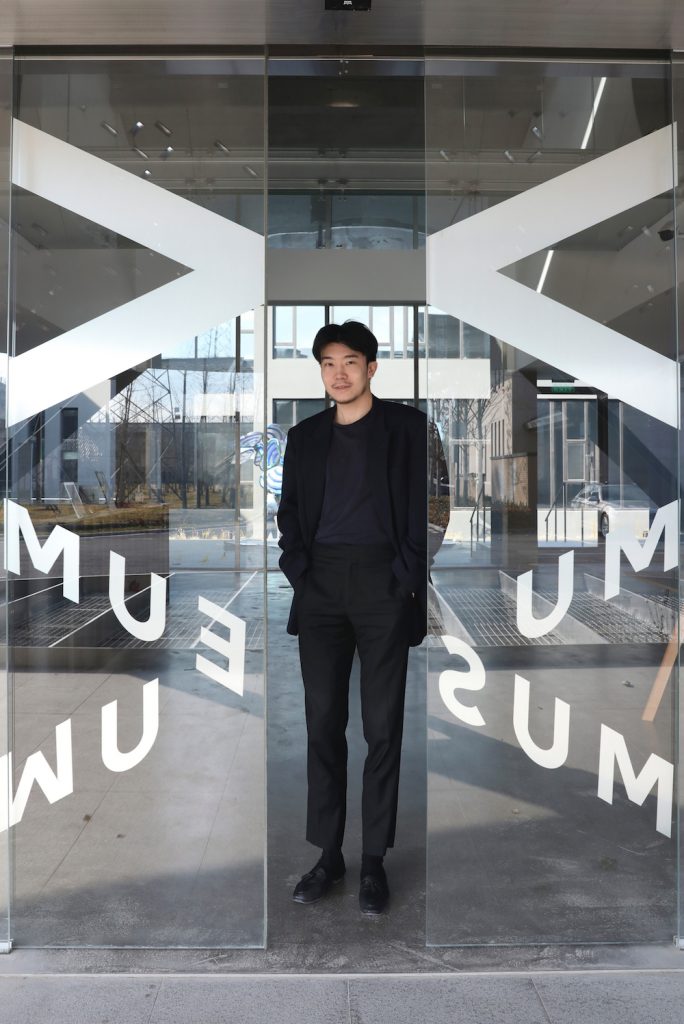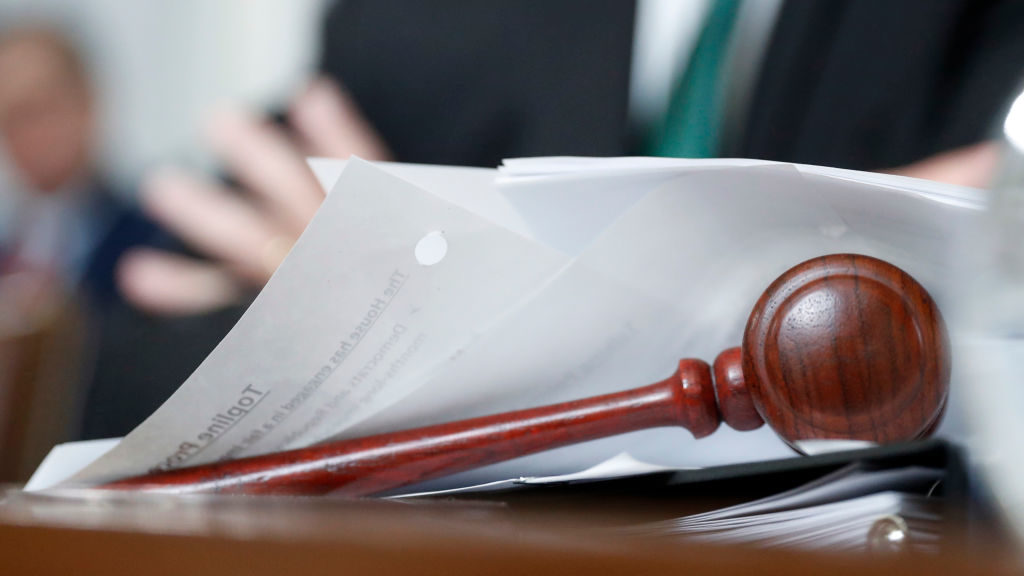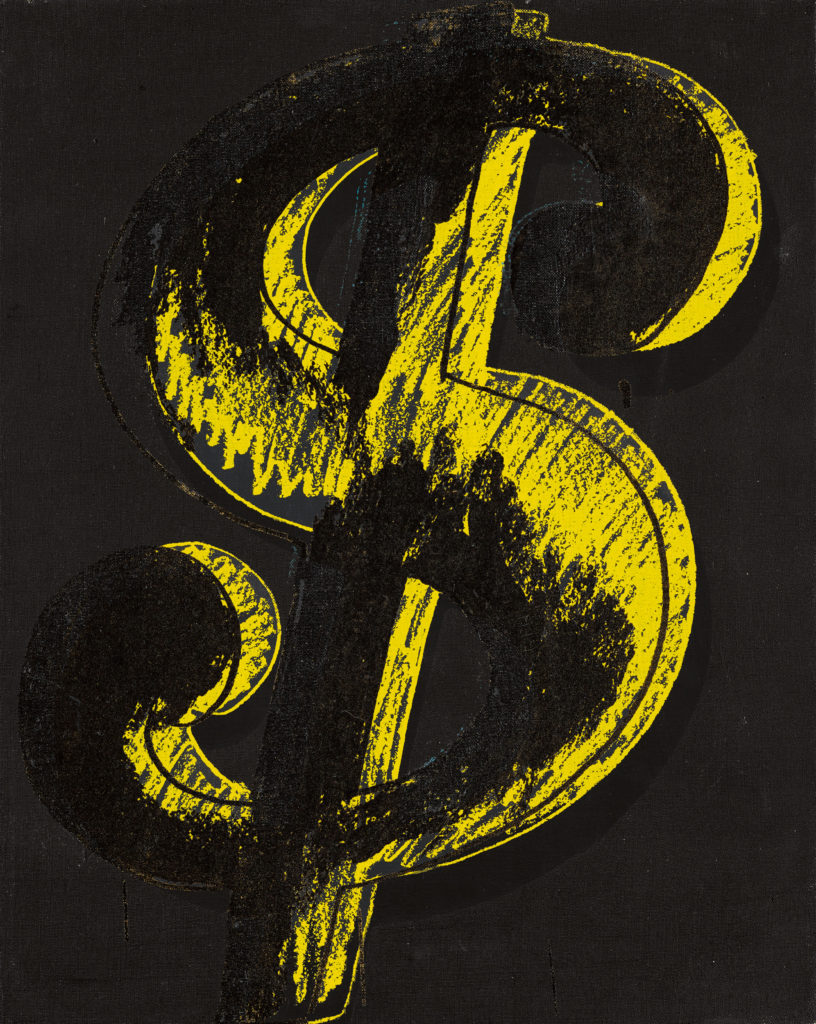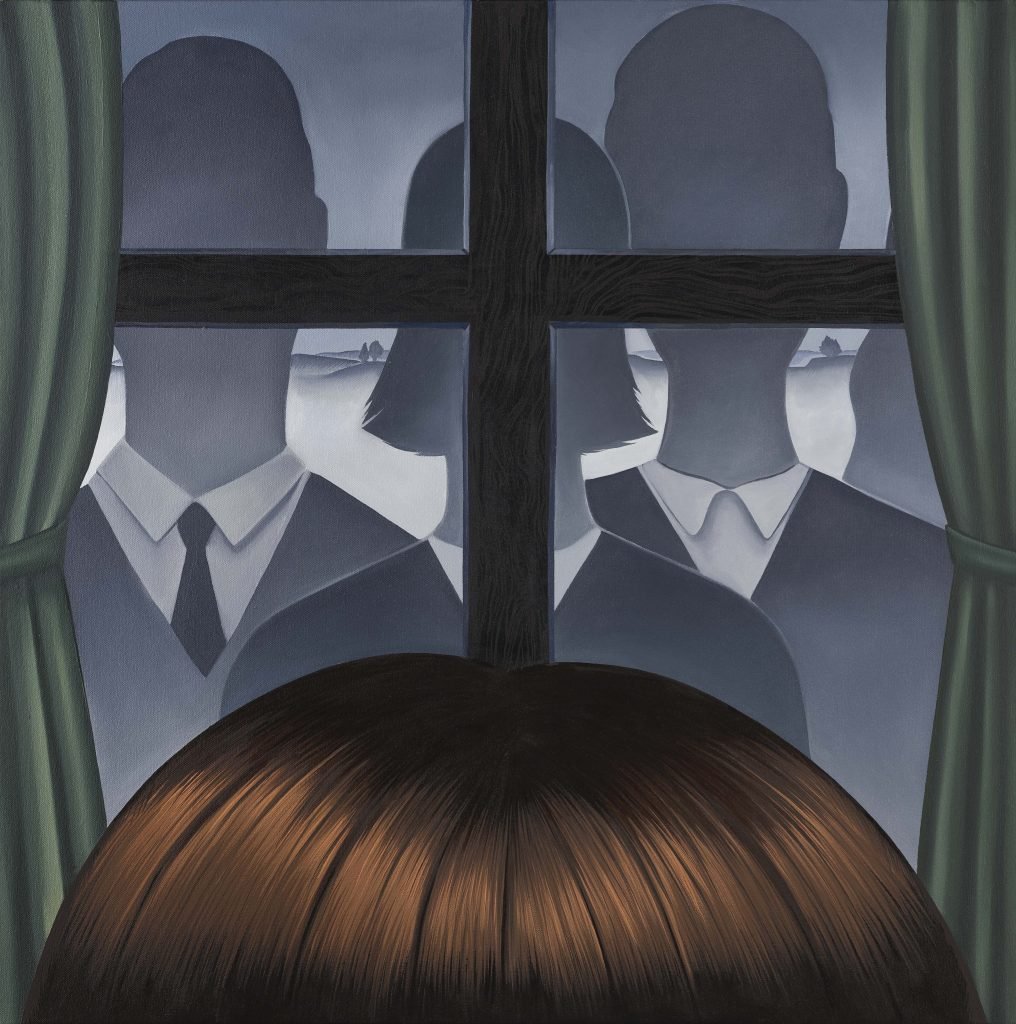The Gray Market
4 Burning Questions About Resale Restrictions Ignited by the Market’s Latest Art-Flipping Scandal (and Other Insights)
Our columnist parses the very public legal battle between Michael Xufu Huang and Federico Castro Debernardi.

Our columnist parses the very public legal battle between Michael Xufu Huang and Federico Castro Debernardi.

Tim Schneider

Every Wednesday morning, Artnet News brings you The Gray Market. The column decodes important stories from the previous week—and offers unparalleled insight into the inner workings of the art industry in the process.
This week, asking who the law works for…
Last Wednesday, James Tarmy of Bloomberg broke the news of a legal skirmish that perked up the ears of market players around the world. In March 2021, X Museum founder Michael Xufu Huang sued Federico Castro Debernardi, the Monaco-based founder of an Argentine art foundation, for allegedly breaching an agreement revolving around the age-old question of whether galleries have legal standing to equip their invoices with resale restrictions. Huang sought more than $1.3 million in damages in the suit, largely for the hits he alleges his own reputation took as a result of his dealings with Debernardi.
Although the two parties settled out of court only hours after the story’s publication, I still think the fracas provides some insights on an evergreen topic in our speculation-fueled market. Most of all, the clash reminds us that (as is so often true elsewhere in the art business) the outcome in any particular conflict over resale covenants is likely to have only as much to do with the law as it does with the economic and social relationships involved.
The Huang-Debernardi dispute, as my colleague Eileen Kinsella conveyed, centered on a Cecily Brown painting sold to Huang for $700,000 by Paula Cooper Gallery at Art Basel Miami Beach in 2019. To acquire the painting, titled Faeriefeller (2019), Huang had to sign a bill of sale with terms assuring the gallery that he was the end buyer, and that he would grant the gallery the exclusive right to act as his agent on any potential resale, lease, or loan of the painting for three years. (I’ll shorthand this provision as a “right of first refusal.”)
If Huang were to breach the terms, the invoice stated, he would agree to pay the gallery the difference between his purchase price and the most recent public auction price for a similar Brown work “in perfect condition.”

Cecily Brown, Faeriefeller Image via Art Basel Miami Beach website.
What Paula Cooper didn’t know, documents submitted to the court show, was that Huang separately agreed to use his superior status as a museum founder and established collector to covertly acquire Faeriefeller for the less-known Debernardi in exchange for a 10 percent fee ($70,000), plus expenses ($5,000).
In fact, what emerged in a nine-month flurry of court filings was that Huang had struck similar art-advisor-like pacts with Debernardi to secure two more in-demand artworks: Nicolas Party’s Two Faces (2018) for €60,000 (plus a €6,600 commission for Huang) and Harold Ancart’s Untitled (2019) for $220,000 (plus a $22,000 commission). Debernardi also at one point sent Huang a so-called “wish list” of other works to try to hunt down on his behalf.
The real problem for Huang arose in August 2020, when Paula Cooper Gallery told him it had learned Faeriefeller was resold by fellow New York blue-chippers Lévy Gorvy that March—only four months after the date on Huang’s invoice. (In fact, Kinsella noted in her story that “[a] source familiar with the case said the Brown had already passed through several hands by the time it got to Lévy Gorvy, which facilitated the sale on behalf of a major auction house.”) Paula Cooper threatened to sue Huang for breach of contract, for an amount between $500,000 and $1 million.
Correspondence submitted as evidence shows that this was the point where Huang freaked out on Debernardi. (“WTF??? Paula Cooper just emailed me this,” he texted.) Huang’s surprise stemmed from the fact that his agreement with Debernardi included several would-be restraints on the latter’s ability to resell Faeriefeller without Huang’s approval, presumably as a way to ensure that Debernardi would never put Huang in default of the right-of-first-refusal commitment he’d made to Paula Cooper.
Those restraints included that neither Huang nor Debernardi would acknowledge to anyone else that Debernardi owned Faeriefeller; that each party would need the other’s approval to present the painting to a third party; and that, for the entire three-year period during which Huang had agreed to make Paula Cooper the painting’s exclusive resale agent, Debernardi would give Huang the first opportunity to shop it to agreed-upon clients at an agreed-upon price.
Regardless, the painting was back on the market in almost no time. Huang (in his words to Bloomberg) “took responsibility” and settled with Paula Cooper for an amount “way over” his 10 percent commission from Debernardi. He then went on to file the suit against Debernardi in March 2021, and after the two exchanged haymakers in court filings, ultimately reached a settlement last week.

Yep, it’s a gavel. Photo by Andrew Harnik-Pool/Getty Images.
There are still plenty of questions about what happened behind the scenes. What I’m more concerned with, however, is whether the Faeriefeller saga proved anything of value about the efficacy of dealer-imposed resale restrictions in a market rife with speculation.
I believe the answer is yes. But like the invoices in this case, that answer also comes with conditions.
The enforceability of gallery-imposed resale covenants has been debated for about as long as modern art-market speculation has existed. Yet here in the U.S., there are no actual judicial rulings on the subject, because every lawsuit that could have led to one has been resolved out of court. (The U.K. legal system is also a blank slate, but I’ll focus on the stateside situation.)
Not surprisingly, opinions on both sides of the argument tend to align with the interests of the groups offering them. Many artists and primary-market dealers believe that resale restrictions can be, as Paula Cooper director Steven Henry told Kinsella for her story last week, “effective tools to help protect an artist’s career”; many auction professionals, secondary-market dealers, and market-minded buyers see them as, to quote Debernardi’s counsel in their motion to dismiss Huang’s complaint, “unlawful tools of market manipulation… whose sole purpose is to hinder competition.”
My conversations with art attorneys and other industry pros, however, have convinced me it’s unwise to take an absolutist stance. The details matter, and they’re different in almost every dispute. The relevant statutes even vary from state to state. Plus, history has shown that the resolution of a flipping-sparked conflict often depends on factors that have little to do with the parties’ estimations of whether the law is on their side.
In light of all that, here are four useful questions to consider when trying to decipher the merits of any particular case…
Successfully batting down a resale restriction likely demands much more than simply arguing that they are detrimental to competition. This is especially true if there is substantial evidence that ostensibly restrictive measures have been used for years in the industry in question.
As a related example, think about the non-compete clauses that often appear in the contracts of auction executives. Although they are plainly “anti-competitive” in a strict sense, they are also clearly defined and tend to last no longer than one year—hence their folksy alias, “gardening leave.” The signees routinely honor these provisions if and when they take a high-profile new job with another house, and they do so because such limited non-compete clauses have generally proven to hold up in U.S. courts (with the extremely pro-worker California being an exception).
A similar principle is likely to apply to any judge’s decision on resale restrictions. It would be risky for a gallery to demand that buyers grant it, say, a lifetime right of first refusal, or an opportunity to buy back the work for less than the original sale price. But if the gallery stipulates, as Paula Cooper did for Faeriefeller, that its right of first refusal lasts only a few years and places no ceiling on secondary-market pricing, its resale covenant stands a stronger chance of surviving a legal challenge.
Not coincidentally, Huang’s counsel used a version of this argument against Debernardi’s accusations of market manipulation. The amended complaint noted that “Florida law does not prohibit clauses that restrict competition if they’re reasonable in time, area, and line of business.” Huang’s three-year right of first refusal fit that mold, the filing argued, and it did so partly because resale covenants have been a part of the art market for years. Plus, how could Huang act as a monopolist when the agreement stated that he and Debernardi would have to mutually agree on a price to a third party?

Andy Warhol, Dollar Sign (1981). Courtesy Sotheby’s.
The most depressing trait of the U.S. legal system is that the law often matters less than the amount of time and money you can afford to spend arguing about its meaning. In this case, when Paula Cooper threatened to sue Huang for damages, he knew the gallery could pump tens, if not hundreds, of thousands of dollars into litigation to protect its interests. That fact likely would have impacted his thinking about a settlement even if he didn’t care about trying to rehabilitate his art-world image (which he clearly does).
Unfortunately, the average emerging or modestly sized gallery doesn’t have the war chest required for an extended legal battle. The killer isn’t even necessarily the billable hours (which, trust me, mount faster than seems possible before you experience it firsthand); pursuing or defending against a lawsuit also takes time and mental energy that the average small business-owner needs to channel into actually doing business. The holistic sacrifice required for litigation means that many galleries have to ask themselves if defending their resale restrictions is a hill they are willing to die on. If not, it’s time to consider alternatives…
It’s a simple decision to blacklist, let alone sue, a flipper if they’re just some slimy-seeming rich guy with no prior art world standing; it’s much more complicated if their alleged malfeasance has to be weighed against their trusteeship in a major institution, their founding of a private museum, or even just their long track record of acquiring works by artists that went on to have tremendous careers.
The Faeriefeller conflagration is an interesting test of this dynamic. In general, threatening to sue a collector is the nuclear option; it means the gallery has no fear of a future without that client relationship, partly because the all-but-guaranteed bad press from the lawsuit can stain a perceived flipper long term. But it’s just as noteworthy that the public only found out about Paula Cooper’s threat to sue Huang because Huang sued Debernardi. Otherwise, the gallery was content to privately settle with Huang and, in all likelihood, excommunicate him from its collector pool.
By the way, sources with experience in similar cases suggested to me that Huang’s settlement with Cooper was likely to be in the neighborhood of the total damages Huang sought from Debernardi ($1.325 million), less the legal fees ($25,000), and minimum “reputational damages” ($1 million) he was estimated to have suffered in his amended complaint. If so, that would put his penance to the gallery at around $300,000, more than four times his 10 percent commission on Faeriefeller.

Julie Curtiss, The whispers (2020). © the artist. Photo © Prudence Cuming Associates Ltd. Courtesy of White Cube.
More often than not, a settlement between the gallery and the original buyer cannot unwind any subsequent transactions made for an artwork sold in breach of a right-of-first-refusal agreement. So the dealer likely cannot get the painting back and fully undo the damage. They can, however, agree to other compensation.
Since auction houses have no interest in getting sidelined (or sued) because of resale-restriction dramas, sources tell me, it’s not uncommon for them to help broker creative solutions that allow fraught consignments to reach the block instead of being withdrawn. That might mean convincing the consignor to relinquish a percentage of the sales proceeds to the artist’s primary-market gallery. Sometimes, either instead of or in addition to that concession, the house will hand the gallery a portion of the buyer’s premium.
In rare cases, the house might even offer to give the gallery a paddle and, if the gallery wins the lot, sell it to them at the underbidder’s price… though, in practice, this last one may just be a poison pill intended to get the gallery to stand down. Still, I’m told it has been offered before.
To sum up, then, the art world has shown again and again that it can and will police resale restrictions internally by whatever means are within its power and appropriate to the circumstances. That doesn’t mean we won’t see more lawsuits like the one between Huang and Debernardi. But it does mean that we’re still unlikely to get a court ruling on this long-simmering uncertainty anytime soon.
[Bloomberg | Artnet News]
That’s all for this week. ‘Til next time, remember: easy answers are for boring questions.